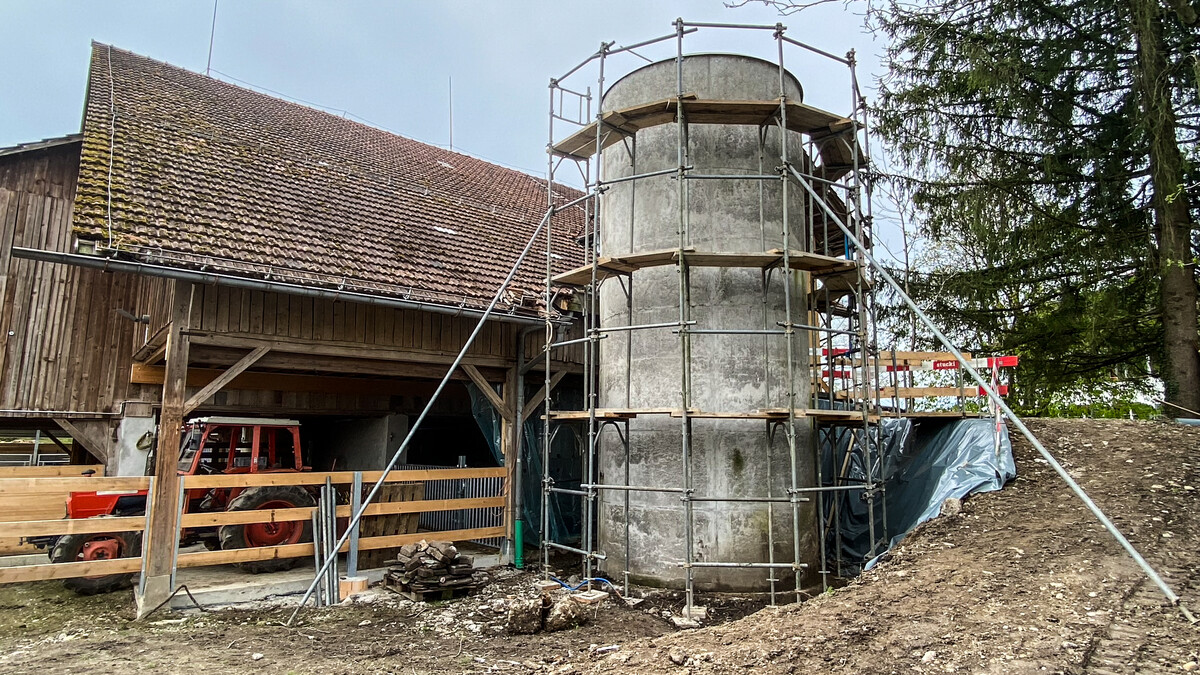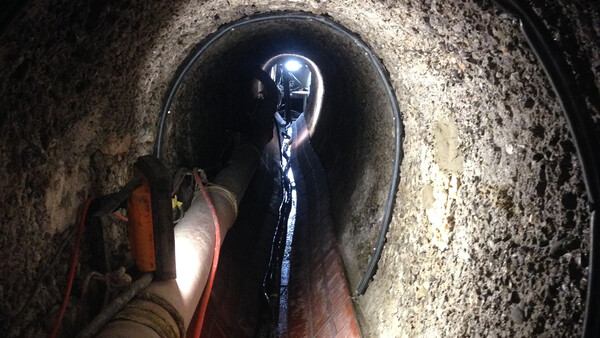Concrete repair and reinforcement - Old Concrete Silo - Hombrechtikon, Switzerland
An old concrete animal food silo was to be converted into a rainwater tank in the course of renovating the entire farm. This meant that no demolition of the structure was necessary and the life of the structure could be sustainably extended. There were many reasons for carrying out the repair and reinforcement with the ARMO system from S&P instead of tradtional rehabilitation measures.
On this page
- Topic
- Concrete repair and reinforcement
- Object
- Old Concrete Silo
- City
- Hombrechtikon
- State
- Zurich
- Country
- Switzerland
- Date
System
Project Description
Situation
The original plan was to reinforce the silo with carbon fabric in combination with epoxy resin. Since the silo was to be put back into operation as quickly as possible and working with epoxy resin places high demands on the humidity and temperature of the substrate and the environment, the concrete repair experts from S&P proposed reinforcement with the S&P ARMO system.
Mortar and embedment offers advantages
The S&P ARMO system combines a special sprayed mortar with a lightweight carbon fibre reinforcement mesh. The system is used for static and seismic reinforcements with a minimal cross-section and minimal overlap.
This had several advantages in this case: The system is somewhat less sensitive to climatic conditions, it is open to vapour diffusion, it offers mechanical protection of the embedded reinforcement and it distributes forces better because the reinforcement is across the full-surface. In addition, it is an organic farm and therefore natural building materials should be used as much as possible.
Solution
Die Betonoberfläche des Silos wurde vorgängig mittels HDW-Verfahren gestrahlt, um die geforderte Rauigkeit zu erreichen. Dies stellt eine optimale Verbindung zwischen dem Bestandsbeton und Betonersatzsystem sicher. 24 Stunden vor dem Spritzen des Mörtels erfolgte das Bewässern der Betonoberfläche, um die Kapillaren mit Wasser zu sättigen.
The concrete surface of the silo was mechanically abraded in advance to achieve the required roughness. This ensures an optimal bond between the existing concrete and the mortar reinforcement system. 24 hours before spraying the mortar, the concrete surface was watered to ensure capillary saturation.
Double mesh to combat heavy load
After watering, Stucki Bauunternehmung AG sprayed the first layer of S&P ARMO-crete® w RQ + in a thickness of 15mm onto the matt damp substrate using the S&P ARMO Power Pump. Afterwards, the construction experts embedded the S&P ARMO-mesh® L500 into the still fresh mortar and pressed it into the mortar with a trowel. Since the load is greatest in the lower four metres of the structure, two layers of ARMO-mesh were incorporated in this zone.
The second layer of mortar, which embeds and covers the reinforcement, was then sprayed onto the first layer, which had not yet set. When the setting process had begun, the contractors levelled the mortar to the required level with an aluminium squeegee and worked the surface with a sponge board. To prevent the mortar from drying out too quickly, it was watered, covered with plastic and cured for seven days.





